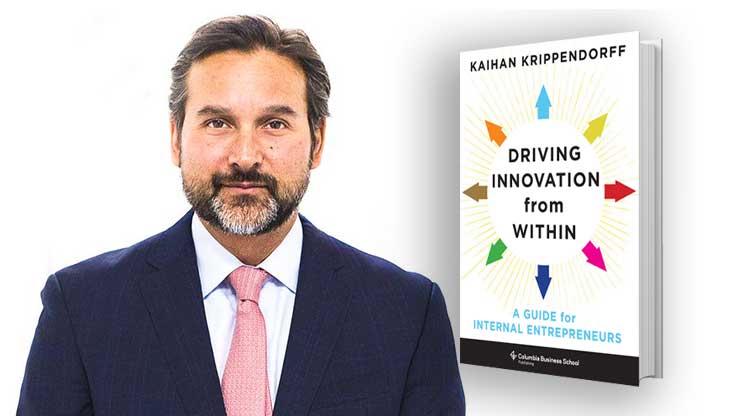Five Ways to Get Out of the Way of Innovation

Your record as a CEO, whether of a private or public company, will hinge on how much value you create during your tenure. Where do you look for that value? While acquisitions, new products, and new markets might be tempting places to obtain value, a fourth option offers far more potential: organic innovation from within.
No source of growth is worth as much as new revenue produced by internal innovation. Produce one dollar of new revenue from within, and investors will reward seven times as highly as if you bought that revenue through acquisition.
Launching a new product or entering a new market leaves investors wondering where the next new product or market will come from. But if you can show that you have enabled your people and organization, broadly, to innovate, you are showing the market you have not just a golden egg but a goose that will keep laying them.
So, how do you drive innovation from within? My research shows that few CEOs are good at it. Indeed, only 3.5% of CEOs whose companies appear on “most innovative” lists actually outperform the market.
Those few CEOs who are able to both be considered innovative and actually deliver higher performance follow a remarkably similar approach to one another. They do not lead innovation as much as they step out of the way. They act more like gardeners, as Joi Ito, former director of MIT Media Lab, put it: “The metaphor I often use—it’s not the perfect one—is being a gardener. I want to make sure that the irrigation and fences are working, that the compost is alive, and that the plants are in roughly the right place, but I don’t tell the plants how to grow. I watch how the garden’s evolving. I may move things around, and I may prune here and there. But it’s not under my control.”
There are four things you can do to allow innovation to flourish in your organization, based on a macro-study of nearly 100 research studies into the organizational drivers of internal innovation.
Leadership
The first step is perhaps the most obvious. CEOs who prioritize innovation encourage it. Unfortunately, often, your deeds do not match your worlds. CEOs may use the term “innovation” and espouse its importance, but then, when it’s time to make resource allocation choices, they put innovation projects at the bottom of the list.
In their weekly executive team meetings, they may follow agendas that get the fundamental topics out of the way and place innovation at the end. Too often, you run out of time before you get to discuss your innovation projects, which communicates to your people that innovation is not important.
Look at the order by which you make resource allocation choices or manage your meetings, and make sure innovation truly occupies a space toward the top.
Talent
A misconception persists about what kind of talent you need in order to innovate from within. We often envision people who look like entrepreneurs or have been entrepreneurs in the past. But research shows that internal entrepreneurs differ in some significant ways to characteristic entrepreneurs.
While internal entrepreneurs are innovative thinkers, maintain an intimate understanding of the customer, and tend toward proactive action, they are actually far less risk seeking than traditional entrepreneurs, are less driven by financial gain (i.e., they get intrinsic value out of innovating), and they have strong political acumen (they even enjoy internal politics).
Look at the internal innovations that have grown out of your company and seek out the people who really drove those innovations. They may be hard to find. Meet them and get a sense of who they are. Look for evidence of innovative thinking, market awareness, proactivity, strategic risk-taking, intrinsic motivation to innovate, and strong political acumen. Then encourage them and look for others with similar characters.
Structure
While much is written about organizational structures that enable innovation, there are only four organizational attributes validated to correlate with higher levels of innovation:
- Providing resources (time and money) to invest in innovation
- Offering incentives that reward innovative behavior
- Allowing for risk taking (creating “psychological safety” as Harvard Professor Amy Edmondson’s research calls it)
- Providing organizational freedom (the freedom for people to collaborate beyond siloes on innovation projects)
Assess your organizational structures across these four dimensions, identify where they are getting in the way of internal innovation efforts, and remove the blockages.
Culture
Finally, look at your culture. Microsoft CEO Satya Nadella has said that a CEO’s primary job is to curate culture, to read cultural norms and weed out what is not working in order to allow the norms you want to flourish to thrive.
Research supports only four cultural norms proven to correlate with higher levels of internal innovation:
- Innovative thinking
- Risk taking
- Customer/market awareness
- Proactivity
Take stock of your formal cultural norms and see how well they align with these four values. How can you remove points of conflict (e.g., one company’s values discouraged risk-taking because they operated in a high-stakes industry, so they reframed “avoiding risk” to “doing it right”)? What norms are missing that you need to introduce?
Summary
Internally driven innovation is worth more than growth through acquisition, launching new products, or entering new markets. To enable broad, organization-wide internal innovation, simply assess the proven drivers of innovation across four dimensions:
- Leadership: Do you encourage innovation?
- Talent: Are you finding and empowering the right kinds of internal innovators?
- Structure: Do your structures provide resources, incent innovative behavior, make risk taking safe, and allow organizational freedom?
- Culture: Do your cultural norms celebrate innovative thinking, allow for risk taking, encourage strong customer/market awareness, and foster proactivity?
Diagnose what you need to adjust. Then implement a plan to make the changes needed. You should soon start seeing greater levels of internal innovation, accelerated growth, and the value appreciation that comes from driving innovation from within.
Have you read?
# The World’s Top 100 Most Successful Unicorns, 2019.
# GDP Rankings Of The World’s Largest Economies, 2019.
# Most Expensive Countries In The World To Live In, 2019.
# Countries With The Highest Average Life Expectancies In 2030.
# The World’s Best Performing Companies 2019.
Bring the best of the CEOWORLD magazine's global journalism to audiences in the United States and around the world. - Add CEOWORLD magazine to your Google News feed.
Follow CEOWORLD magazine headlines on: Google News, LinkedIn, Twitter, and Facebook.
Copyright 2025 The CEOWORLD magazine. All rights reserved. This material (and any extract from it) must not be copied, redistributed or placed on any website, without CEOWORLD magazine' prior written consent. For media queries, please contact: info@ceoworld.biz









